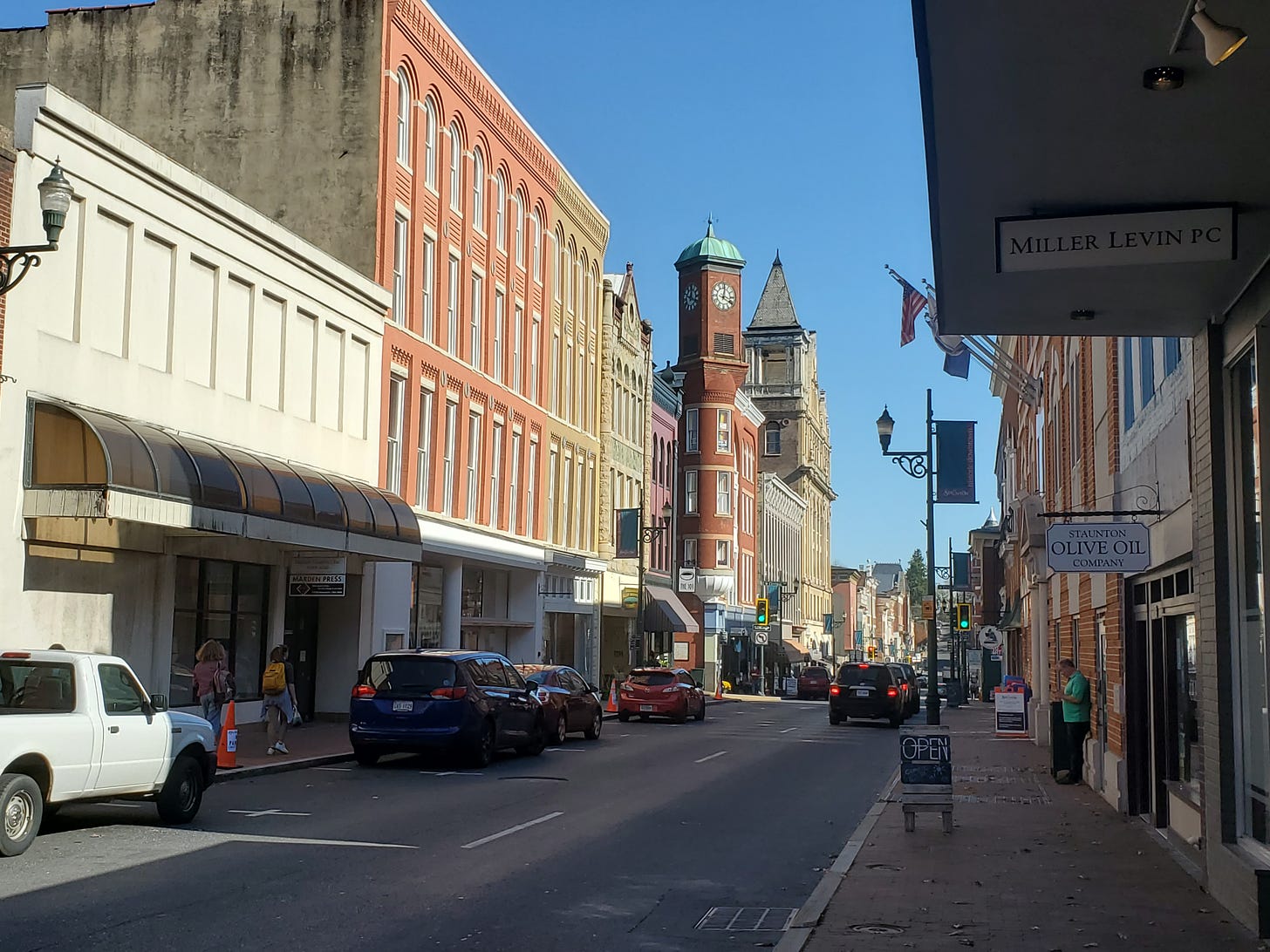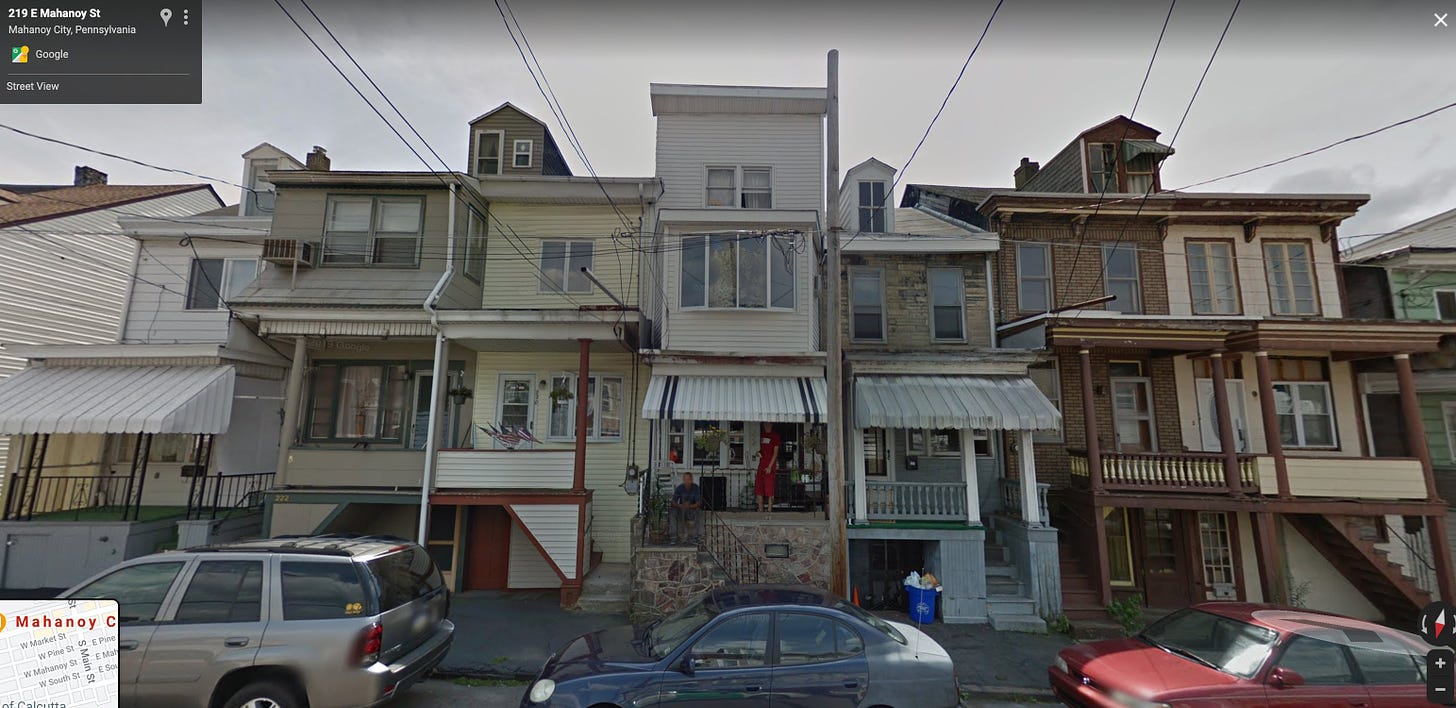Mayberry Wasn't a Subdivision
In between the big city and the sprawling suburb, there's the ubiquitous and neglected small town. Conservatives should champion it.
A point I often make is that alongside cities and sprawling suburbs, America is replete with another built form: small towns. Despite getting short shrift in a lot of urbanist conversation, small towns are “urban” too, at least much more so than conventional suburbs. As one Twitter interlocutor put it, urbanism is a matter of design more than of population.
Despite the fact that thousands of small towns dot virtually every region of America, it doesn’t seem to occur to a lot of defenders of the suburban status-quo that the basic form of these classic towns could be replicated or expanded, such that more people could enjoy the benefits of an essentially urban form without the intensity of a big city. We could either build new developments in a more classic, town-like form—like the New Urbanist projects of Seaside in Florida and Kentlands in Maryland’s D.C. suburbs—or we could reform the land use regime and financial incentives to expand existing towns rather than build car-oriented sprawl along their edges, or simply further and further out into the countryside. (To do the latter, it would also be necessary to convince small-town NIMBYs that new growth is okay, especially if it follows the existing built form of the place.)
Staunton, Virginia, population 24,000 (OK, more of a small city or large town!)
It’s always striking to me when I’m out on the road far from the D.C. area, usually in central or southwestern Virginia, and I drive through a little rural town with beautiful public and civic infrastructure, and, more to the point here, classically urban buildings which the vast majority of suburban zoning codes now prohibit. For some examples, check out a photo essay I did last November, driving four hours south on the Virginia stretch of U.S. Route 11.
This should be food for thought for those who see Manhattan or Levittown as the only archetypes for America’s built places, and especially for those who see any alternative to the suburban status quo as some kind of newfangled social engineering scheme. There are, in reality, few things more “American” than small towns.
Mahanoy City, Pennsylvania, population 4,000.
There’s a lot here—a Twitter thread I started on this subject got a lot of attention, as this general observation always seems to—but the purpose of this post is simply to point out the fact that there are thousands of places across America which nonetheless take a classic urban form and yet are not major cities. It should also be noted that long before zoning, many towns featured predominantly single-family house neighborhoods along with connected houses, neighborhoods with mixed housing options, and mixed-use commercial/residential downtowns. This suggests that the upzoning of single-family zones would leave many of them coherent and intact. It doesn’t make sense to put up apartment towers next to houses at random; in cases where this kind of thing does happen, it tends to result from odd incentives, not the mere fact that larger projects can be built by right. Strong Towns does a lot of good work on the wonky finances of large-project development.
Woodstock, Virginia, population 5,000. There’s a very strong possibility this building could not be built today per your community’s zoning code.
Expect more thinking through on all of this, as well as discussion in the comments. But I’ll leave you with this basic point: We can still build places like those in these photos, if we want to. And why, exactly, wouldn’t we want to?







Dear Mr. Del Mastro, I much appreciate your ‘the deleted scenes’ blog for its insights into American city and town history, and I am sympathetic to your (and Strong Towns) abiding critique of extensive suburbia along highways that primarily codified single house per large lot zoning extending far outside of traditional urban zones from about the 1950’s onward. While I avoid name-calling such as denigration of stereotypical suburban so-called ‘NIMBYs’, I understand such frustrations encountered by New Urbanist oriented professional planners.
What concerns me in the present-day/future context is ‘lumping together’ often modest and
small-scale mixed housing areas adjoining city borders or newly-created urban perimeters with what are radically different Exurban corporately designed large developments sold to households seeking to get away from congestion on grossly over-extended highways. What is actually happening in many metropolitan areas are high-priced ‘build-up’ developments in and right around so-called ‘edge cities’ (mostly not truly urban Cities). These may be former Central Business Districts or defunct Industrial/Commercial zones that Centralized Planning Boards are (suddenly) trying to redevelop as densified urban systems with large-scale new public infrastructure investments to facilitate lobbyist-inspired ‘Master Plans’ just for profit. Historically widespread projects of so-called ‘slum-clearance’ pushed Minorities out of city centers in 1950’s/60’s, a well-documented strategy motivated by racism and and classism. But emerging new ‘wrinkle’ of this ‘Re-urbanizing Machine’ shifts the blame onto current-day residents of older houses on small lots and garden apartments (often affordable ones), shaming them as ‘NIMBYs’ when they have nothing in common with newer residents of wealthier exurban suburbs extending further out. Mature small suburban enclaves near urban zones are already woven into a more densified Metropolitan-urban-light industry and small shop-owning way of life that have racially and socio-economically integrated by now. These residents & workers use public transportation plus private automobiles for transport.
Yet, so-called New Urbanist ‘transit-oriented-development’ (acronym TOD) master plans aim to raze them to the ground and replace them with Private, For-Profit Developer built and marketed over-densified housing and (oddly named) ‘mixed-use/place-making’! But, these are already tightly clustered residential/work/shopping communities along narrow streets. Destroying existing and functional mature modest ‘suburban’ enclaves has become a profit-oriented land-use rezoning Mantra - to be only partially replaced by so-called ‘attainable’ or ‘missing middle’ much tighter housing with diminished quality-of-life amenities, but at much higher purchase and rental Price Points’ that most upwardly mobile younger householders can no longer afford. In short, we are experiencing a new propagandistic ‘sleight-of-hand’ in which corporate investors and developers openly label local residents and businesses as ‘the enemy’ of social equality and racial integration by calling them ‘NIMBYs’ and worse. I’d like to see someone with your skills and insights take on these reconfigured expropriations for what they are underneath computer photo-shopped shiny images of new residential communities open to all, and fancy footwork by so-called progressive politicians using the rhetoric of the Civil Rights movement and perceived need for working/middle class family homes to push through their self-interested Zoning Reforms undermining social well-being.
Let’s see your ‘take’ after examining real-world demographics and shapes of small racially integrated existing neighborhoods located adjacent/near to ‘expansive’ urbanizing centers.
Joel Teitelbaum, Greater Lyttonsville, Silver Spring, MD
LOL, if it has a crowded downtown with multistory buildings, it isn't a small town it's a small city. If it has a pretentious cafe with 8 dollar lattes it isn't a small town, it's a small city. And yes I do know you'd have to drive an hour to get a cappuccino in my neck of the woods.